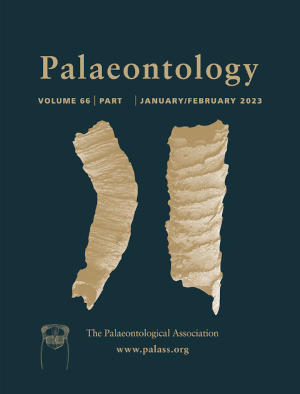Article: Palaeobiology and taphonomy of the rangeomorph Culmofrons plumosa
Publication: Palaeontology
Volume:
66
Part:
4
Publication Date:
2023
Article number:
e12671
Author(s):
Giovanni Pasinetti, and Duncan McIlroy
Abstract
Abstract The deep marine Ediacaran fossil record of Avalonia is dominated by the Rangeomorpha, a clade characterized by up to four orders of fractal-like branching. Despite their abundance, morphological diversity and the recent increase in Ediacaran studies, aspects of their palaeobiology, palaeoecology and phylogenetic position in the tree of life are still hotly debated. The clade has traditionally been interpreted as consisting of organisms that lived erect in the water column and tethered to the seafloor, based on the intuitive interpretation of their frondose body plan. However, recent work has challenged this view and instead proposes a reclining mode of life for several rangeomorphs, possibly in symbiosis with chemoautotrophic bacteria. Here, we offer a detailed description of exceptionally preserved specimens of Culmofrons plumosa from the Discovery UNESCO Global Geopark in Newfoundland, Canada. We suggest that Culmofrons plumosa should be reinterpreted as a reclining organism based on taphonomic and morphological evidence. Additionally, reproductive modes and a growth model of the species are here inferred, and they appear to be most consistent with a reclining mode of life, offering a novel palaeobiological reconstruction of the species.
